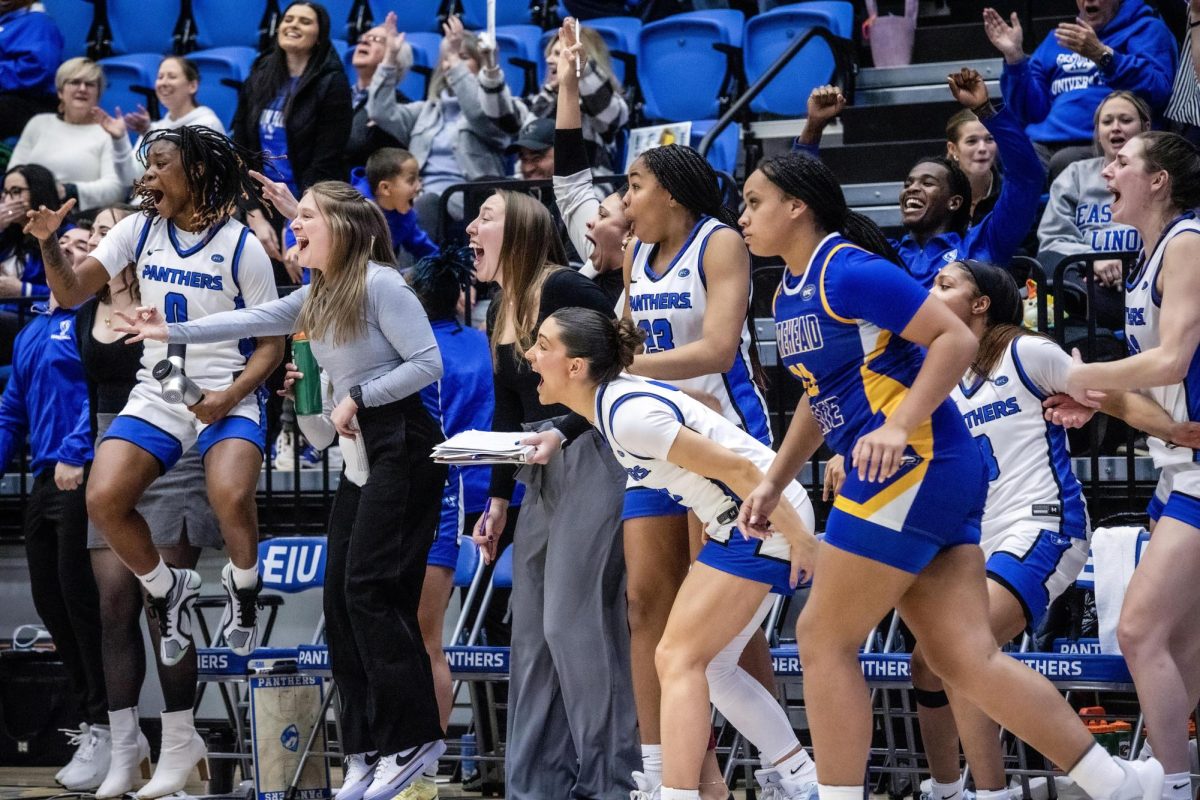Contrary to popular belief, free speech zones do not actually protect free speech everywhere. Funny enough, they were created to do just the opposite.
In response to the 1960s Berkeley Free Speech Movement led by Students for a Democratic Society and inspired by the civil rights and anti-Vietnam War efforts, universities began passing policies regulating political activity to designated zones.
This administrative strategy effectively disrupted and displaced all student activism to these spaces.
The irony should be obvious; “We are protecting freedom of speech— by limiting where you can do it.”
The Library Quad and Mellin Steps are Eastern’s designated free speech zone. It features an outdoor amphitheater, high foot traffic and is relatively isolated from most university classrooms. Our activists are spoiled.
However, we should reflect critically on whether limiting speech to these locations actually protects us. Two things can be true at once. We can understand that the Library Quad is an ideal location to assemble political activity while simultaneously recognizing the dangers that free speech zones pose to our rights.
In principle, as long as you are engaged in lawful activity and are not disrupting any educational or administrative operations, you are well within your rights to assemble and express yourself on campus.
If Eastern were to restrict said expression solely because it was “outside the free speech zone,” then the university would likely find itself acting above the law. It is for this reason that students have a successful history of winning cases against speech zoning policies.
Free speech zones are not permanent fixtures on college campuses either. In fact, they are becoming increasingly rare. According to the Foundation for Individual Rights and Expression, only one in 10 of the surveyed universities still practice speech zoning policies, and many states have already banned them.
What’s worse is that the few remaining free speech zones across the country have become less beacons for preserving the free and open exchange of ideas and more bastions for brazen and open hate speech. Free speech zones obscure the line between what constitutes free speech and verbal harassment.
I would argue that shouting racist, Islamophobic and homophobic insults towards students is not protected speech, but when it happens at Eastern suddenly everyone shrugs their shoulders, throws their hands up in the air and says, “What can we do? It’s the free speech zone.”
The administration puts out a few yard signs regurgitating the free speech zone policy and calls it a day.
In practice, free speech zones confine all student activism to a singular space while casting a veil of protection for hate speech.
These policies do not protect us and are not our friends. These are the same tools used against students fighting for civil and human rights back in the 60s. Why should we preserve them?
It’s time we send these policies to the place where they belong— the dustbin of history.
Jason Farias can be reached at 581-2812 or at jsfarias@eiu.edu.















![[Thumbnail Edition] Senior Foward Macy McGlone, getsw the ball and gets the point during the first half of the game aginst Western Illinois University,, Eastern Illinois University Lost to Western Illinois University Thursday March 6 20205, 78-75 EIU lost making it the end of their season](https://www.dailyeasternnews.com/wp-content/uploads/2025/03/WBB_OVC_03_O-1-e1743361637111-1200x614.jpg)














![[thumbnail edition] Assistant Coach of the Linebackers, Rodman Noel talking to the linebackers about their positions at O'Brien Field on the Eastern Illinois University campus, Charleston Ill.](https://www.dailyeasternnews.com/wp-content/uploads/2025/04/FB_24_O-1-e1744671213207-1200x609.jpg)
![[THUMBNAIL EDITION] (From left to right) Head football coach Chris Wilkerson works with his son student assistant coach Peyton Wilkerson at football practice at O'Brien Field on the Eastern Illinois University campus on Thursday.](https://www.dailyeasternnews.com/wp-content/uploads/2025/04/FB_25_O-1-e1744234837107-1200x596.jpg)











































